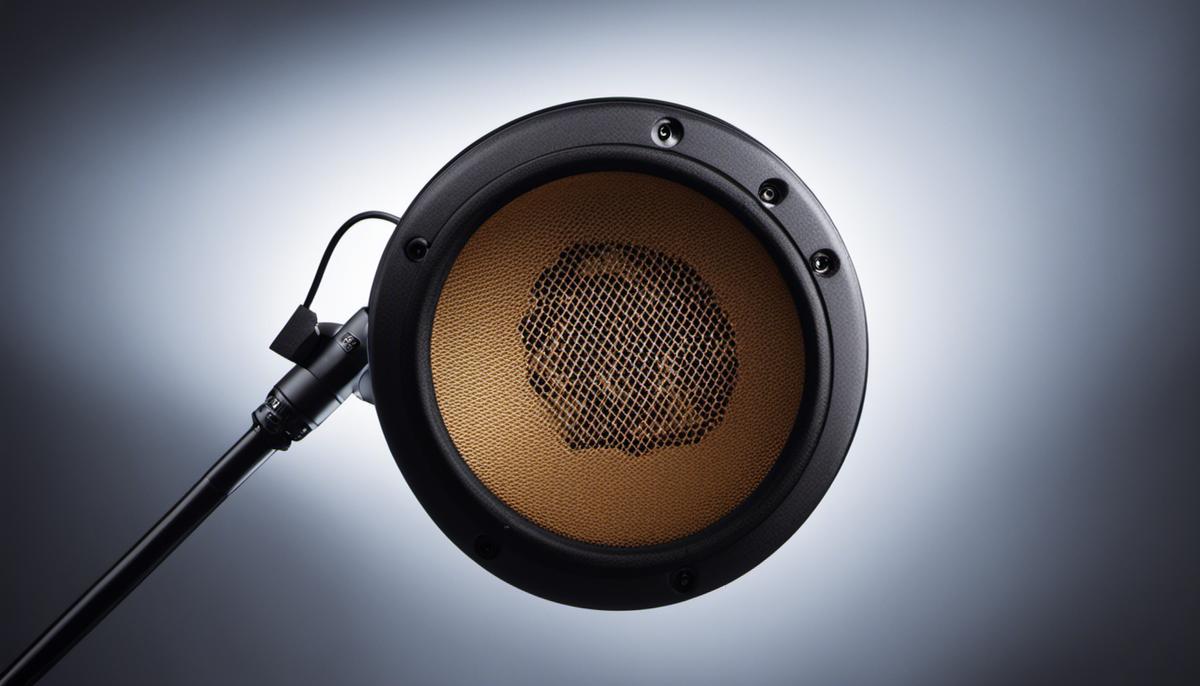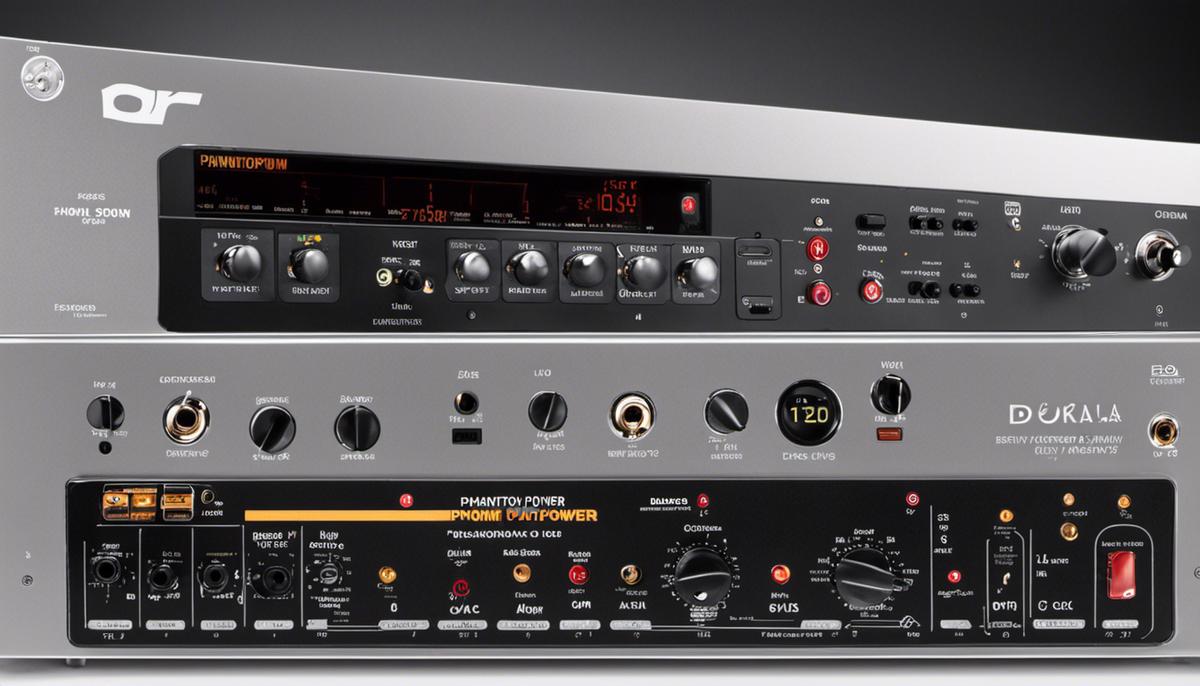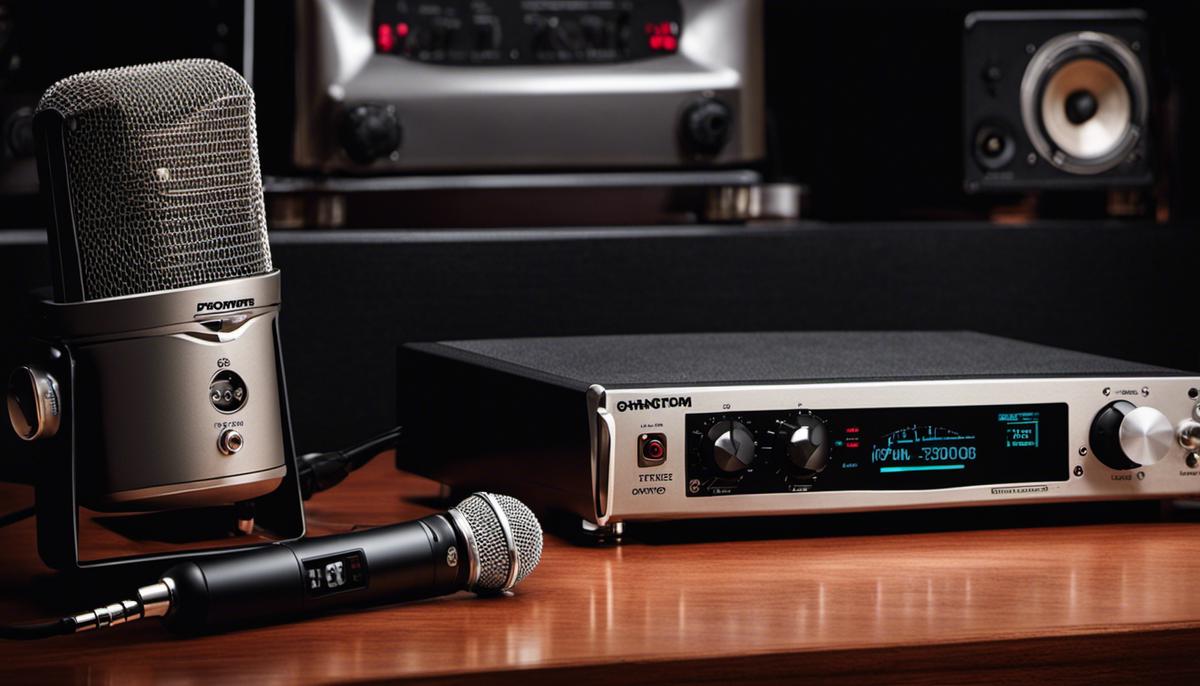Music – a language that knows no boundaries, remains incomplete without the assistive brilliance of technology. One such gem in the music world’s crown is ‘phantom power’ that amplifies the harmonious symphony of sound from condenser microphones. This essay delves deep into the realm of phantom power, offering the readers a lucid understanding of its functioning, applications, and significance. Apart from demystifying complexities, it also attempts to tackle common hitches that one might stumble upon while using phantom power in connection with condenser microphones. As artists constantly strive for perfection, the essay delivers unique insights on best practices, empowering them to transform every musical endeavor into an exemplary performance. Lastly, recognizing that music is as much about its past as its future, the narrative traces the evolutionary journey of phantom power itself, from its humble roots to its present day ubiquity in the music industry.
Understanding Phantom Power
The Symphony of Silence – Unraveling the Mystic Melody of Phantom Power in Condenser Microphones
In the symphony of sound that dances around our ravaged eardrums with the elegance of a thousand ballerinas, there exists a deep, silent whisper. A whisper so entwined in the very essence of sonic expressions that its absence resounds as loudly as its presence – the mystical melody of phantom power. It lurks within the shadows, whispering life into metallic lungs. It thrives in the unseen corners of stages and studios, one of music’s unsung heroes, much like the humble condenser microphone.
To understand the significance of phantom power, one must first appreciate the exquisite artistry of the condenser microphone. A creation so infinitely mysterious, that it breathes life into waves of air, converting audible art into energetic impulses. But this magical mic is far from a simple spectator to the grand concert of melody and rhythm. It yearns to take center stage, plugged into the orchestra of electronics, consoling the frenzied storms of symphonies into tantalizing whispers.
Without a generous swig of phantom power, the very heartbeat of the condenser microphone would flatline, its voice imperceptible. This is where the thrilling symphony of sound and science fuses into thundering crescendos and hushed lulls. Phantom power is the invisible conductor orchestrating this grand performance, the very string that plucks at the heartstrings of a condenser microphone.
Akin to a choir member’s nod to the maestro, the condenser microphone recognizes phantom power as an invitation to perform. Without this ethereal energy relayed through microphone cables, the condenser microphone remains locked in a silent standoff with sound. This power, largely in the 48-volt range, sneaks through the XLR cable, telling the microphone to awaken from its slumber and sing in harmony with the symphony of sounds around it.
Simply put, the condenser microphone is a perfect example of a sonorous symphony’s quiet protagonist. It carries the heavy weight of capturing the music world’s unspoken whispers and guttural growls. Without its backstage hero – phantom power- there can be no triumph over the cacophony of silence.
Existing in the shadows of stages, phantom power embraces its ethereal name rather fittingly. Its invisibility in the sonic sphere belies its significance. Ever so subtly, it energizes the condenser microphone, making it an integral part of recording studios’ tapestry and colossal concert fields.
As passion-seekers in the all-consuming embrace of sound, we must pay our dues to this ninja of the sound world. In the hushed whispers of phantom power, we find the silent protagonist, breathing life into every note and rhythm. A perfect potion to soothe and awaken the metallic lungs of the condenser microphone, making this intelligent design of human innovation hum along the harmonious milestones of music.

Phantom Power Troubleshooting
The almighty force known as phantom power, crucial as it is to the successful operation of condenser microphones, is not without its potential complications and predicaments. There are common pitfalls and challenges that can filter into the world of sound and disrupt the symphony. It’s necessary to acknowledge these issues – and, more importantly, understand how to address them – to maintain harmony in the realms of music creation and appreciation.
Just as a finely tuned violin or a meticulously crafted guitar can suffer from string clashes or fret buzz, the delicate balance of a condenser microphone setup can also veer off-course. One of the most common phantom power snags is the dreaded possibility of inconsistent voltage. If the ideal voltage of 48V dips or fluctuates, the quality of sound captured by the condenser microphone can become distorted or degraded. This problem could emerge from a myriad of sources, including a deficient preamplifier, inadequate cables, or even an unstable power supply. The solution rests in careful troubleshooting and equipment testing to identify the weak link and restore the power pathway.
Yet another ghoul that can haunt phantom power is an audible hum or buzz, piercing the ether of music with its unsettling presence. This unwelcome addition to your sonic space is typically caused by a grounding issue. It’s often the consequence of an imbalanced impedance match between the microphone and the recording device. To exorcise this sonic specter, you might need to consult your gear’s manual to ensure proper impedance matching or tweak your grounding practices.
The nightmare scenario of phantom power shorting out is also a reality that must be addressed. A short circuit, possibly due to a miswired microphone cable, can cause your power supply to fail. This potentially catastrophic event underscores the significance of proper maintenance and careful handling of your cables. Regular cable checks and necessary replacements will keep the vivacious heartbeat of your music thriving.
Let’s not overlook the interference caused by radio frequency or RF. Though not specific to phantom-powered setups, RF interference can cause apparent phantom power problems. Faulty cables and poor shielding can act as antennae, picking up unwanted radio signals. Using a balanced cable system and ensuring that any nearby wireless devices are operating at different frequencies can help ameliorate this problem.
Though these phantom power setbacks might appear formidable, they’re typically more akin to a discordant note in a symphony than a halted performance. Just as every musician discerns the subtle layers of rhythmic pulse and melodic ebb and flow, the vigilant troubleshooter, too, can identify and resolve these phantom power predicaments. The dance between problem and solution, hardship and triumph, is another intriguing composition in the grand symphony of sound, an ode to the ever-evolving love affair we have with music.

Best Practices for Phantom Power and Condenser Microphones
Ready to dive deeper into the captivating world of music where every whispered note, every subtle timbre is a testament to the unseen power of technology? Luckily, having already explored the concept of phantom power, and the pivotal role it plays, it’s time now to delve into the nitty-gritty of optimizing its use for an unrivaled musical experience.
Music, a concoction of passion, talent, and technology, invites individuals both on the stage and in the studio to understand its complexities. Among these is phantom power, a seemingly invisible entity, which, when categorized by voltage inconsistencies, can weave a chaotic symphony of obstacles.
Voltage inconsistencies can distort and degrade the audio quality, transforming a blissful melody into disjointed notes. Challenging? Yes. But fear not – overcoming these inconsistencies often lie in choosing high-quality power supplies and thoughtfully constructed audio interfaces. Ensuring the power supplied to the condenser microphones is stable and consistent can make all the difference in a recording or live performance.
But there’s more than just voltage issues to be mindful of. The technical elements of sound engineering are like a tightly woven symphony, each instrument contributing to the whole. Imagine, in that symphony, a rogue instrument: the hum or buzz caused by grounding issues, an audio arch-nemesis capable of injecting a jarring note, a discordant tone into the enveloping music.
Grounding issues usually stem from an unbalanced electrical load or improper equipment setup. Just like a maestro leading the orchestra, rectifying each grounding issue comes down to meticulous inspection and adjusted settings. It’s about mastering control over the elements which, while hidden within the depths of cables and interfaces, have significant implications on audible output.
As musicians, sound engineers, or even ardent music lovers, short-circuiting and power supply failures can seem like a nightmare set to an unfortunate soundtrack of silence. But remember, even a glitch can become a part of the rhythm in the grand dance of music making. Post such scenarios, vigilance and preventive care rise to paramount importance. This comes in form of investing in reliable power units, extending regular check-ups to the entire gear, and ensuring the protective measures are taken during storage or transportation.
Speaking of transportation, attention must also be paid to a ubiquitous yet overlooked source of disturbance – radio frequency interference (RF). Any recording studio or concert field can be awash with waves from nearby electronic devices, creating an unwelcome distortion in the otherwise pristine notes.
The key to dancing around this issue lies in the balancing act of cable systems and smart handling of wireless devices. Balanced cables are robust, reducing susceptibility to RF, and when paired with meticulous device management, can significantly limit the risk of interference.
From troubleshooting phantom power issues to maintaining and handling cables with care, sound production asks for the meticulous effort akin to composing a melody. Every cord, microphones, and power source has a part to play in this magnificent composition of sound. This tale of unending dedication is a testament to the continuous love affair with music and its challenges.
Finally, let it be said that the pursuit of superior sound quality is not without its hurdles. But it’s in meeting these challenges head-on, in appreciating the essential, albeit silent role of something as mundane as phantom power, do we truly tune into the magical symphony that music truly is. And isn’t that, after all, the crux of any outstanding musical experience?

Evolution of Phantom Power in Condenser Microphones
Evolution is the lifeblood of music, unceasing in its primal heartbeat, constantly shifting, reforming, and metamorphosing in its endless strive for innovation. Paralleling this ceaseless transformation, the advancement of phantom power in condenser microphones has been instrumental in the journey of sound. The narrative of phantom power evolution, though often shielded behind curtains of obscurity, radiates through the concert fields and recording studios, catapulting music into the realms of sonic grandeur.
By breaching the confines of the mechanical transducer world, phantom power flickered to life in this sonic universe sometime in the mid-20th century. Pioneering a revolution, it brought an increased recording flexibility to condenser microphones, thus enhancing the dynamism of music production. The newfound ability to operate without bulky external power boxes was indeed a watershed moment in live performances and studio recordings, forever altering the mobility and responsiveness of the production process.
Yet, like any construct in the whirlpool of technological evolution, phantom power has been subject to steady stages of metamorphosis. Over the years, the standard voltage of phantom power has heightened from a meager 12V to an efficacious 48V. This escalation, though seemingly minute, has monumental implications. The raised voltage allows condenser microphones to capture a broader frequency response and superior transient performance, creating a more defined, undisrupted connection between the artist and the listener.
These evolving standards of phantom power have also enabled a greater range of tonal possibilities, catering to diverse music genres. Rock bands, symphony orchestras, jazz trios, all are beneficiaries of this evolution. The spectrum of sound has been widened, propelling us further into the sonic ecstasy of music.
But the journey was not always gleaming with improvements. The turbulence of radio frequency interference initially posed detrimental threats, often warping the purity of sound with annoying hums and buzzes. However, advancements in technology led to the incorporation of Radio Frequency Interference (RFI) filters into mic preamps, restoring the sanctity of the sonic realm and exempting audiences from the dreaded disturbance.
The evolution of phantom power in condenser microphones is a testament to the relentless pursuit of audio perfection, a quest unyielding in the face of hardships. It’s a symphony in itself, studded with high notes of triumph, and soulful interludes of tribulations. It’s reflective of the beautiful, maddening, and joyous quest for harmony that unites everyone in the music fraternity. It sings of an industry fervently committed to delivering the composers’ visions and the artist’s emotions, all under the unseen halo of phantom power.
As we twirl to the beats of the modern music world, may we continue to embrace the subtle symphony of phantom power. The journey may not be visible to our eyes, but it breathes life into our ears every day, one track at a time, filling the world with the spirit-ruffling, heart-thumping symphony we call music.

Powering through the crescendos and decrescendos of the music industry, the ever-present phantom power has shaped the way we create and perceive music today. The unseen conductors of the grand symphony, phantom power and condenser microphones are significant pillars upholding the auditorium of sound. Regular troubleshooting and adherence to best practices ensure that this powerful tool remains consistent in producing pristine audio. In retrospect, the evolution of phantom power in condenser microphones proves that music technology only matures with time, fostering a fresh resonance for every epoch. As the magical carpet of phantom power unfurls, it continues to aid passionate musicians in etching their melody into the heartbeats of music lovers, from past to the future.

Comments.
Currently there are no comments related to this article. You have a special honor to be the first commenter. Thanks!